Question
I was cross cutting firewood at a friend's house the other day after an unknown log truck driver dropped off a load of logs for him. As I was cutting through the load I came across an unusual log, and I pulled it out and took it to my sawmill.
I believe this is a genuine American chestnut measuring some 8' long and about 14" to 18" in diameter. It does not have the bark of a horse chestnut, and I am almost positive that it is not a Chinese chestnut because it is not as dense as the last Chinese one that I cut a few years ago. The bark seems to match perfectly, same with the density, and the wood color. I resawed about 500 board feet of American chestnut last year and I am familiar with its characteristics, but this is the first time I have found an actual log.
Can anybody direct me to some bark, end grain, and face grain images with clarity? I did some quick image searches and I had a hard time finding what I am looking for.
It's a long shot, but I do believe I have something special here. If it is what I am hoping for, it's a major shame that somebody cut it down.
Forum Responses
(Sawing and Drying Forum)
From contributor G:
An American chestnut that big may have blight resistance. On the chance that it does turn out to out to be American chestnut, you need to find out where the stump of the tree is as soon as possible so that if it's still there, folks from the American Chestnut Foundation can check it out. Just because the tree was cut down doesn't mean it is dead. If it sprouts from the stump it can be identified from the leaves/twig. Scientists can also use tissue culture to propagate American chestnut so you don't even need a sprout, just live tissue. If you haven't already, go to the ACF website. They have resources that may be of help to you.
The end grain cell pattern of American chestnut is like that of oaks, but you can't see the ray cells in American chestnut like you can in oaks.

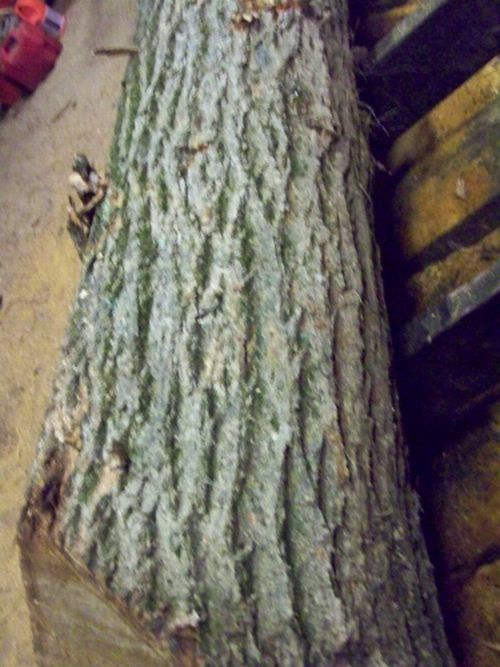
It has a white oak like smell, similar but somewhat... I'm not quite sure how to describe it.
Thank you very much for the mention of hobbithouse. I am amazed that hornbeam and hop hornbeam are listed, and blown away by the fact that serviceberry is listed. I would love to have a conversation with this guy! I have sawn all three of these ironwoods and have not found any clear information about any of them; one more reason I would love to write a book someday, but not in the near future!
This wood is somewhat dense, but the picture does seem to exaggerate it. The sapwood is a creamy white, and about 1/4" thick with 3 or 4 growth rings. While cleaning the log's bark this morning before sawing it, I found a chestnut like leaf stuck to it with some mud. The leaf clearly shows some saw tooth edges, but is kind of chewed up from being dragged and grappled many times.
If I could compare it to anything, it would be a smell something (but not quite) like white oak and maybe asparagus, an open grain like white oak (but lacking medullary rays), and a bark something like white ash. To the naked eye, and in the correct angle of light, I can barely see medullary rays present, and at a distance of even 3-6" they are invisible. The colors of fresh cut log ends seem to turn a bit yellowish after a few hours, and after a few days the yellow seems to lighten up.
I also need to add that the end grain sample I provided is very fresh and wet cut. That exact end grain sample has now lightened up considerably.
I have called the ACF, Penn State University, and Rutgers University. After seeing the pictures on this website they all say it seems to be American chestnut, but I have to wait for them to receive the samples I sent in the mail for an exact confirmation.
I took a couple pieces back from the firewood yard today that are anywhere from 6" to 12" in diameter (upper limbs of the same tree, and still unsplit) and I am planning to cut them up into anything usable down to some small pen blanks.
Before I do this, is it possible to bury some chunks and have a sapling form from the cambium or bark? The bark is still white and wet in areas.
I paneled a den back in 1978 with wormy American chestnut. It seems like it was much less dense than oak. I am trying to remember the smell, but I don't recall it being very distinct. Maybe like cardboard.
Of course the smell of sassafras is spicy. My first guess after seeing the photos was black locust as someone above suggested. I would have looked for the thin sapwood also.
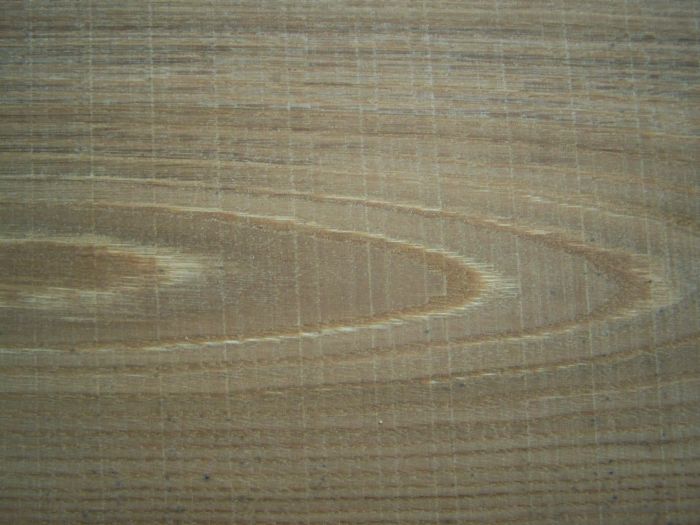
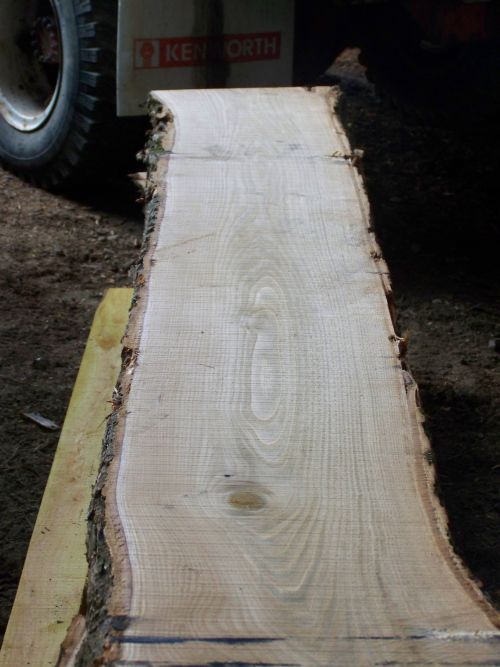
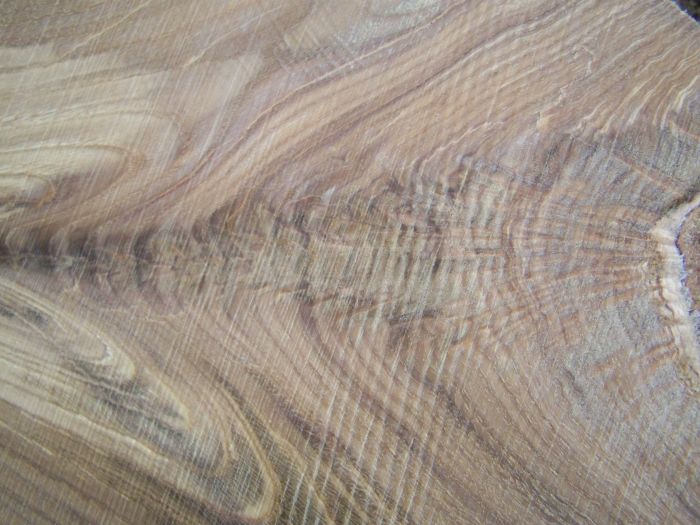
Here's a nice photo of the recently discovered chestnut near Lake Erie.
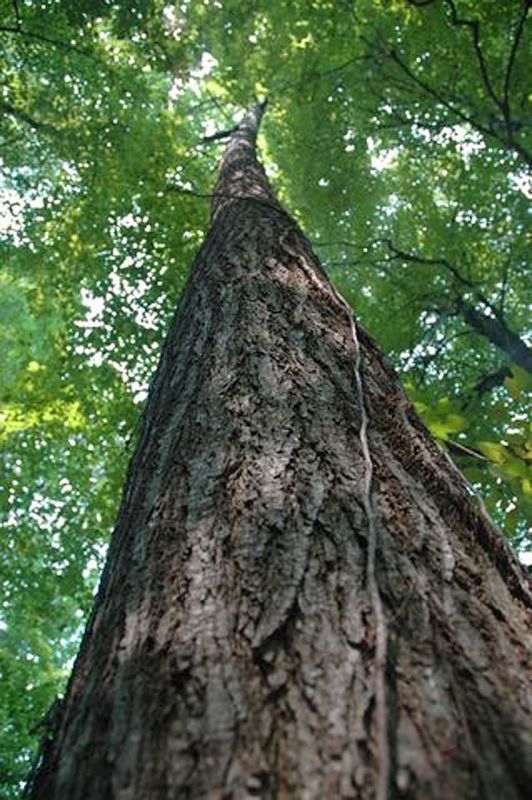
There were also some trees, much larger, that were noticeable because there was not a scrap of bark on the trunks or limbs. They were sound when I rapped them with a stick or axe handle, so I figured when I eventually got to them they might yield good firewood. However, I couldn't identify them. I thought perhaps they were ash but standing dead ash usually is not barkless and is not rot resistant.
Also in the neighborhood were some trees that I thought might be black walnut. I have found a few scattered trees around town (identified by the fruit) and it was a toss-up between black walnut and butternut, which also can be found here. Butternut is not a hardy tree, however, and I have never seen one standing completely barkless.
When I finally cut down the largest of the dead trees, about 20" at its base, I finally got to see inside the trunk. The wood was completely sound; sort of brown, coffee-with-cream color; no apparent sapwood; and, when I cut a piece off, not very heavy.
I took a piece home and dressed it and it was harder than butternut. I have built quite a bit of furniture and cabinets from butternut and I have always gotten a slight tearout where there is grain direction change. My new piece planed well. It is not black walnut; I have built stairs and handrails from black walnut and it is not as dark or dense.
Recently I cut a smaller tree and split some of it for firewood and, while it split well, the fibers were somewhat interlocked. Once again, I was struck by the light weight of the wood.
A friend came by, who cuts a lot of firewood, and I asked him what he thought it was and just by looking, he said "ironwood", but agreed it wasn't when he picked it up. He, and our wives, said it had an unpleasant smell, sort of like elm. (Having breathed too much black walnut and mahogany dust, I can't smell anything.) I know it is not elm, having split enough of that when younger.
Looking at the end grain, the rings are evident but not in great contrast. I considered black ash at one time but black ash is a lowland tree, growing in damp to wet areas. The mystery tree grows in high, rocky terrain. Because of its apparent rot resistance and color I think of chestnut, although I have never handled chestnut before. In this conversation, someone mentioned that a lack of sapwood might indicate locust, and I know locust is rot resistant. I am stymied. Not having any bark to look at is hampering the identification and twigs and small branches are also gone. Does anyone have a thought?